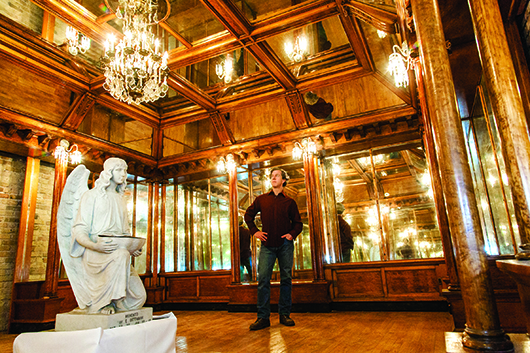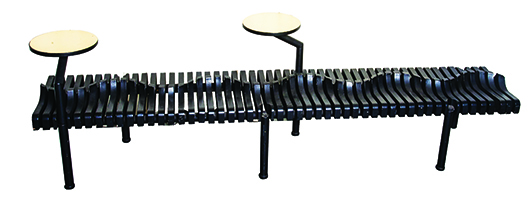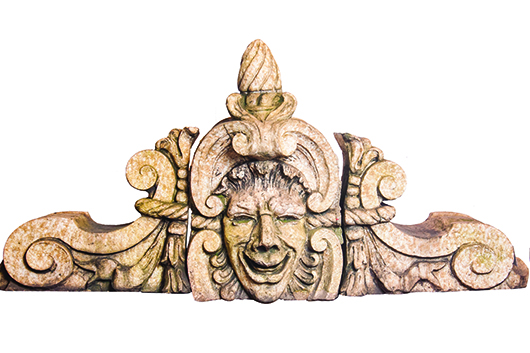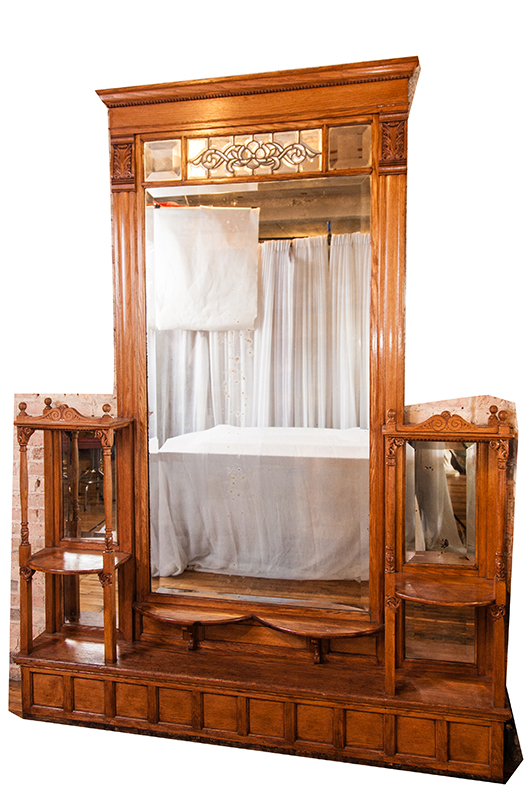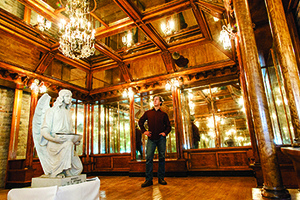
An archaeologist by trade, Grannen’s passion for “digging for treasures” began as a boy, when at the age of 7 he found and purchased his first treasure – a stained glass window. This ultimately led to a formal education in archeology and prompted his development and evolution of urban archeology. This has served him and the recipients of his efforts well for the better part of three decades.
Recently Antique Trader spent some time talking about the treasures presently in his store, inquiries he receives from treasure hunters – like a recent request for help acquiring a purple elephant – which he fulfilled, and the historic people he’d most like to lunch with if he had the chance.
Antique Trader: It’s been said that you’re an urban archeologist and ‘treasureologist.’ Are those accurate titles?
Stuart Grannen: Yes, I’m an archeologist. That was my formal education. The treasures I find are very good quality and useful items.
A.T.: How do you explain what Architectural Artifact is and does, to people who are unfamiliar with it?
S.G: We buy and sell high-quality antiques from around the world. What separates us from the rest is that we focus on large and unusual items.
A.T.: If we were to walk into your showroom today, what types of items would we find?
S.G: You would walk in the door and immediately see a large bronze table with winged, naked women on it from the old Continental Bank in Chicago. You would see a revolving, old barber pole that used to be on the streets. You would also see a 10-foot hanging Spanish chandelier that came from one of the McCormick estates. You would see a Fisk life-size iron deer. You would see a set of interesting, wooden lockers from the Bank of France in Paris.
A.T.: How has the industrial antiques and furnishings business changed since you opened Architectural Artifacts in 1987?
S.G: Truthfully, I invented it 30 years ago. It’s what I like, it’s what my eye always went to. It’s what I could afford to buy at the time. When I stopped buying industrial antiques 10 years ago, the industry kind of took off.
There are lots of items that are industrial but not all of them are made with a good design in mind. I buy French industrial lights and other great Italian design items such as swing seat tables – interesting pieces and not just industrial items.
A.T.: What can you tell us about the plans and development of your Museum of Historic Chicago Architecture?
S.G: I’m not really doing that anymore. I’ve sold a lot of it. There are plans in the works for new galleries at the store (4325 N. Ravenswood Ave. in Chicago) and a new outdoor showroom.
A.T.: If you were able to have lunch with a group of five architects/designers, who would select and why?
S.G: Thomas Jefferson, Louis Sullivan, Frank Lloyd Wright, Chicago architect Jeanne Gang. The great Egyptian architect Pharaoh Ramses because he built what nobody else could build, and no one knows how he did it.
For more information, visit www.architecturalartifacts.com or call 773-348-0622.
Architectural Artifacts’ Three Keys to Great Business
• Only buy when you have the money.
• Don’t worry about the size of the profit, just make one.
• Buy and sell the best pieces.

ADDITIONAL IMAGES OF NOTE
